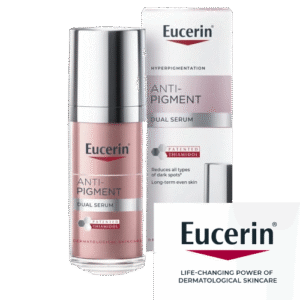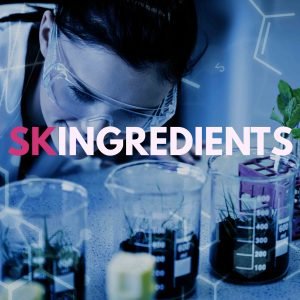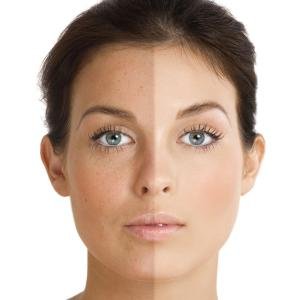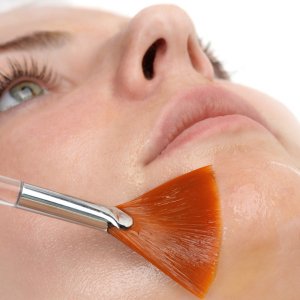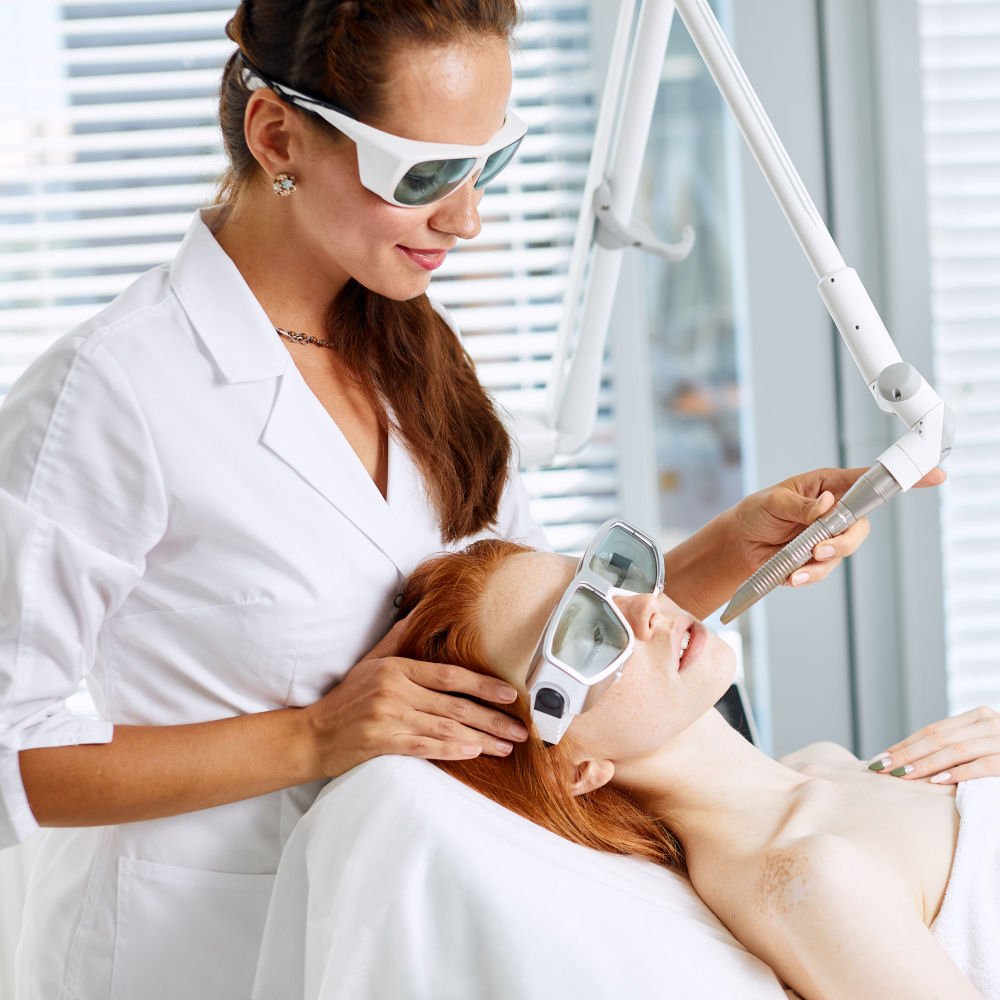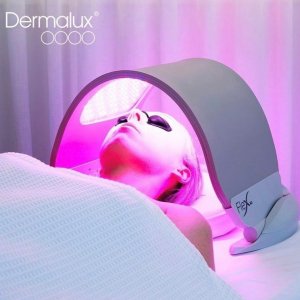Redness
WHAT IS REDNESS (ERYTHEMA) OF THE SKIN?
Redness of the skin (known as erythema) can be caused by many different triggers, including irritation, sun damage, allergic reactions, or some skin conditions. The main symptom of redness is simply flushing or redness on the skin, which can appear all over or in patches, dilated capillaries, and acne. An occurrence of erythema could be a signal of an underlying health condition, and so if you are struggling with redness, it is always best to get it checked by a skincare expert.
Causes of skin redness
Sunburn
Most people are aware that if we go out in the sun and burn our skin, it will go red. A sun burn (also known as solar erythema) is a skin response to overexposure of ultraviolet (UV) radiation from the sun (or from tanning beds), and it is very important that we protect our skin 365 days a year, using a sunscreen of SPF 50, and reapply roughly every 2 hours, to ensure our skin is fully protected from the damaging UV rays. It is also important to remember that the UV rays can cause other erythema causing skin conditions to worsen, and so by protecting it, you can prevent irritating it further.
Rosacea
If you are suffering from a red rash, or flushing on your face, then it could be a skin condition known as rosacea, which affects around 10% of the population. This redness can be especially prominent when you are stressed, warm, drinking alcohol, or eating spicy foods, and it can make the blood vessels in your face appear more visible. If you suspect that you have rosacea, it is recommended to see your doctor when you first notice the symptoms, as this can prevent it from becoming severe.
Eczema
The common skin condition eczema (also known as atopic dermatitis) can occur at any age, and effects up to 10% of the adult population. This skin condition causes dry, sensitive skin that flares up with itchy red patches, and it can occur anywhere on the body. If you suspect that you have eczema, it is important to see your doctor as prescription treatment may be required.
Allergic contact dermatitis
Allergic contact dermatitis is when the skin responds and becomes irritated when it comes into something that you are allergic to. These can include certain chemicals, metals, or even printer ink. If you regularly handle these, you can develop an allergy over time, that you did not have previously. The redness on the skin is a natural reaction of your body’s immune system, and it should go away once the irritant has been identified and avoided.
Psoriasis
Psoriasis is a chronic, autoimmune skin condition that causes skin cells in the body to develop too rapidly, causing flared, red patches on the skin, and it affects around 2% of the population. It commonly presents itself on the scalp, elbows, or knees, and often resembles silvery scales on a salmon pink skin. For many skin conditions, it is important to see a doctor to ensure that your diagnosis and treatment plan is appropriate.
Compromised Skin Barrier
Our skin is bombarded daily with a number of threats, either from outside the body or from within, and these could compromise your skins protective barrier. These external and internal threats could be from the humidity levels in the environment, allergens, irritants, sun exposure or psychological distress. If you have a compromised skin barrier, it can make it easier for irritants to penetrate the skin and can cause inflammation and irritation (erythema). By introducing skin barrier loving ingredients into your skin care routine, you can begin to rebuild your barrier, and in turn reduce erythema.
Sunburn
Most people are aware that if we go out in the sun and burn our skin, it will go red. A sun burn (also known as solar erythema) is a skin response to overexposure of ultraviolet (UV) radiation from the sun (or from tanning beds), and it is very important that we protect our skin 365 days a year, using a sunscreen of SPF 50, and reapply roughly every 2 hours, to ensure our skin is fully protected from the damaging UV rays. It is also important to remember that the UV rays can cause other erythema causing skin conditions to worsen, and so by protecting it, you can prevent irritating it further.
Allergic contact dermatitis
Allergic contact dermatitis is when the skin responds and becomes irritated when it comes into something that you are allergic to. These can include certain chemicals, metals, or even printer ink. If you regularly handle these, you can develop an allergy over time, that you did not have previously. The redness on the skin is a natural reaction of your body’s immune system, and it should go away once the irritant has been identified and avoided.
Rosacea
If you are suffering from a red rash, or flushing on your face, then it could be a skin condition known as rosacea, which affects around 10% of the population. This redness can be especially prominent when you are stressed, warm, drinking alcohol, or eating spicy foods, and it can make the blood vessels in your face appear more visible. If you suspect that you have rosacea, it is recommended to see your doctor when you first notice the symptoms, as this can prevent it from becoming severe.
Psoriasis
Psoriasis is a chronic, autoimmune skin condition that causes skin cells in the body to develop too rapidly, causing flared, red patches on the skin, and it affects around 2% of the population. It commonly presents itself on the scalp, elbows, or knees, and often resembles silvery scales on a salmon pink skin. For many skin conditions, it is important to see a doctor to ensure that your diagnosis and treatment plan is appropriate.
Eczema
The common skin condition eczema (also known as atopic dermatitis) can occur at any age, and effects up to 10% of the adult population. This skin condition causes dry, sensitive skin that flares up with itchy red patches, and it can occur anywhere on the body. If you suspect that you have eczema, it is important to see your doctor as prescription treatment may be required.
Compromised Skin Barrier
Our skin is bombarded daily with a number of threats, either from outside the body or from within, and these could compromise your skins protective barrier. These external and internal threats could be from the humidity levels in the environment, allergens, irritants, sun exposure or psychological distress. If you have a compromised skin barrier, it can make it easier for irritants to penetrate the skin and can cause inflammation and irritation (erythema). By introducing skin barrier loving ingredients into your skin care routine, you can begin to rebuild your barrier, and in turn reduce erythema.
DOs and DON'Ts of skincare for redness
- DO choose a gentle, simple cleanser that will prevent causing more irritation to the skin and making it inflamed.
- DO include ceramides in your skin care routine, which can help the skin maintain moisture and prevent irritants from entering and causing irritation. These are especially important, because as we age, our ceramides begin to diminish compromising our skins barrier. By adding these into our skincare routine, we can essentially top-up our remaining ceramides.
- DO include niacinamide into your skin care routine as this can protect the skin from irritation, dehydration, and the appearance of redness as it has anti-inflammatory properties.
- DO use skincare that contains centella asiatica, as this is able to improve skin redness, hydrates, and calm the skin through its anti-inflammatory properties.
- DO use SPF every day (even on cloudy days and in winter) to protect your skin from the UV rays that can cause damage to the skin. If your skin is sensitive, you should use a physical SPF, that contains titanium dioxide or zinc oxide, as chemical sunscreen can often cause further irritation.
- DON'T use fragrances or harsh chemicals, to prevent your skin becoming further irritated. It is also important to remember that these could be the cause of your redness if it is rosacea or contact dermatitis.
- DO ensure you are gentle with your skin, and try not to over-exfoliate it, as this could damage your skins protective barrier.
- DO see a doctor if you are concerned about your erythema, or it appears to be getting worse.
Our Recommendations
Cleanser
SkinCeuticals Gentle Cream Cleanser – this beautiful cream cleanser is perfect for those that suffer with redness to the skin. It is very gentle, and it soothes and calms the skin using soothing orange oil and emollients.
Moisturiser
SkinCeuticals Triple Lipid Restore 2:4:2 – a luxurious restorative cream that contains a concentration of ceramides, natural cholesterol and fatty acids helps to restore skins barrier and provide nourishment.
Serum
SkinCeuticals Redness Neutralizer – A light weight gel-cream that helps to visibly reduce skin redness, cools the skin, and combats environmental triggers that can lead to flaring and blotchiness.
Serum
NeoStrata Redness Neutralising Serum – a cooling and soothing serum that helps to reduce redness, calm the skin, and strengthen the skin’s protective barrier.
Sun Protection
Heliocare Mineral Tolerance Fluid – this fragrance free, breathable, SPF 50 sunscreen has been tested on the most sensitive skin, making it a popular choice for those that have redness, or flare-ups as this won’t irritate the skin further.
Our Recommendations
No products were found for this query.
Unfortunately, erythema is a very common skin condition that affects around one in five, and it can occur at any age. There are many causes of erythema, and below are just a few:
Treatments for redness
There are many products available for treating redness and you may need a prescription medicine from your doctor in some cases, although if these are not successful, there may be a treatment available which could help.




